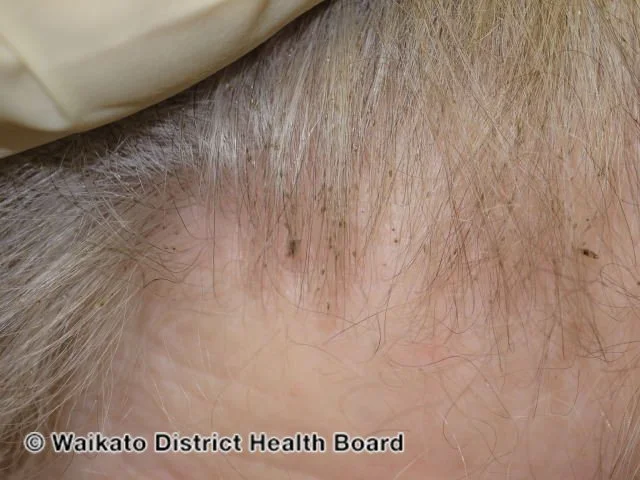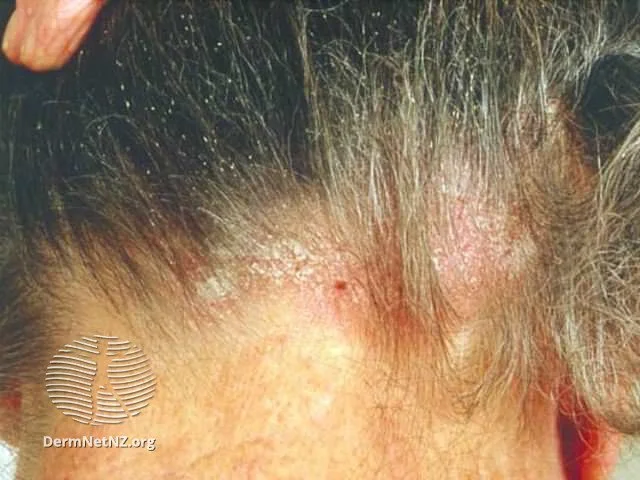
Head Lice
Plaque psoriasis, which demonstrates well-demarcated, red plaques with a classic silvery scale.
Credit: DermNet NZ
What are head lice?
Head lice are tiny, wingless parasites that inhabit the human scalp and neck, feeding on small amounts of blood. Itchiness, often intense, is the primary symptom individuals detect. This sensation, however, might not manifest until weeks post-infestation. While head lice don't pose a severe health risk, their presence can lead to distractions, sleep disturbances, and even absences from school or work.
What causes head lice?
Head lice infestations result from direct contact with an infested individual or through sharing personal items like hats, combs, or bedding. Being wingless, lice don't travel great distances on their own. It's essential to understand that head lice infestations are not a reflection of personal hygiene, as they can infest anyone, irrespective of cleanliness.
What are the symptoms of head lice?
Itching is the hallmark symptom of a head lice infestation. Over time, these pests become more visible, especially once their eggs, known as nits, hatch. Bites might be observable, but they can be challenging to spot. If head lice are suspected in you or your child, it's prudent to initiate treatment.
How do I treat head lice?
Several treatments can effectively combat head lice. A non-medical approach involves using a fine-toothed lice comb to wet hair and combing thoroughly multiple times daily for several weeks. If opting for medications, the following are commonly used:
Topical treatments containing pyrethrin or permethrin
Ivermectin cream, especially when resistance to other treatments is a concern
Topical dimethicone, which works by suffocating the lice
In extreme cases, shaving the affected area
How do I prevent head lice?
Preventing head lice, especially among school-aged children, can be challenging due to their social nature. Nevertheless, simple preventative measures can help. Advise children against sharing items like hats, combs, or brushes, and other personal items, which can be a vector for lice transmission.
Live head lice live on the part of the hair follicle closest to the scalp due to the warmth there.
Credit: DermNet NZ
Head lice can also result in scalp dermatitis due to the inflammation.
Credit: DermNet NZ



